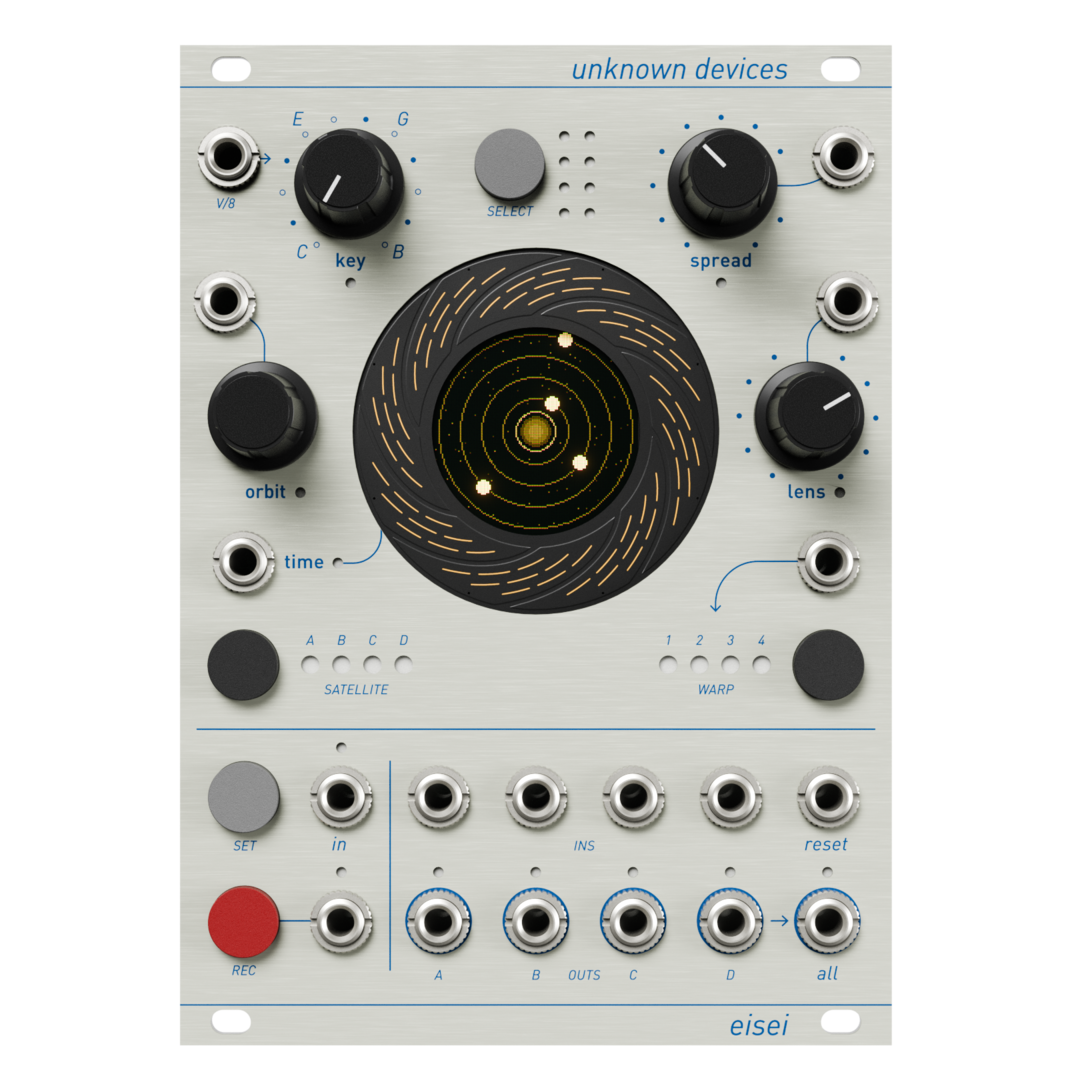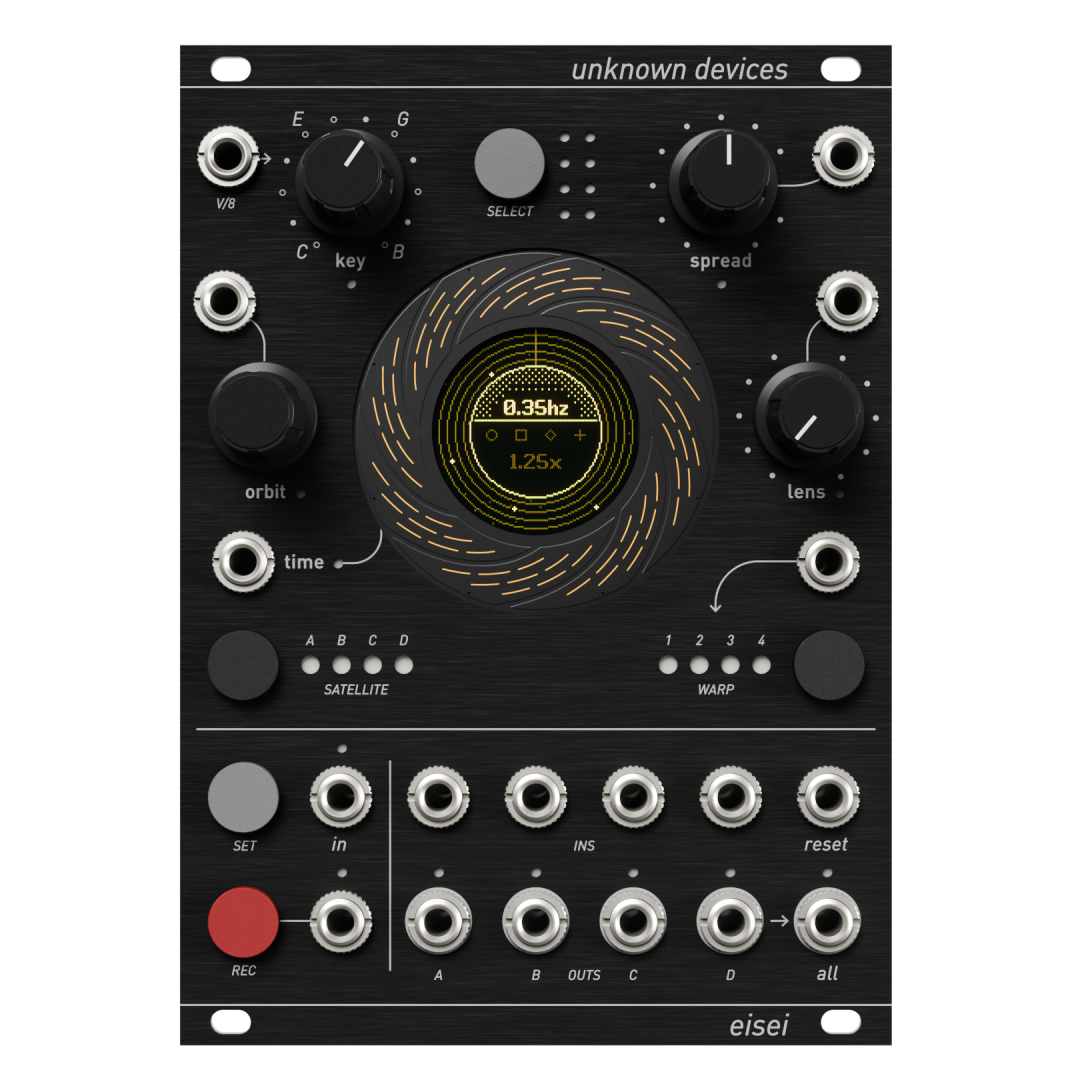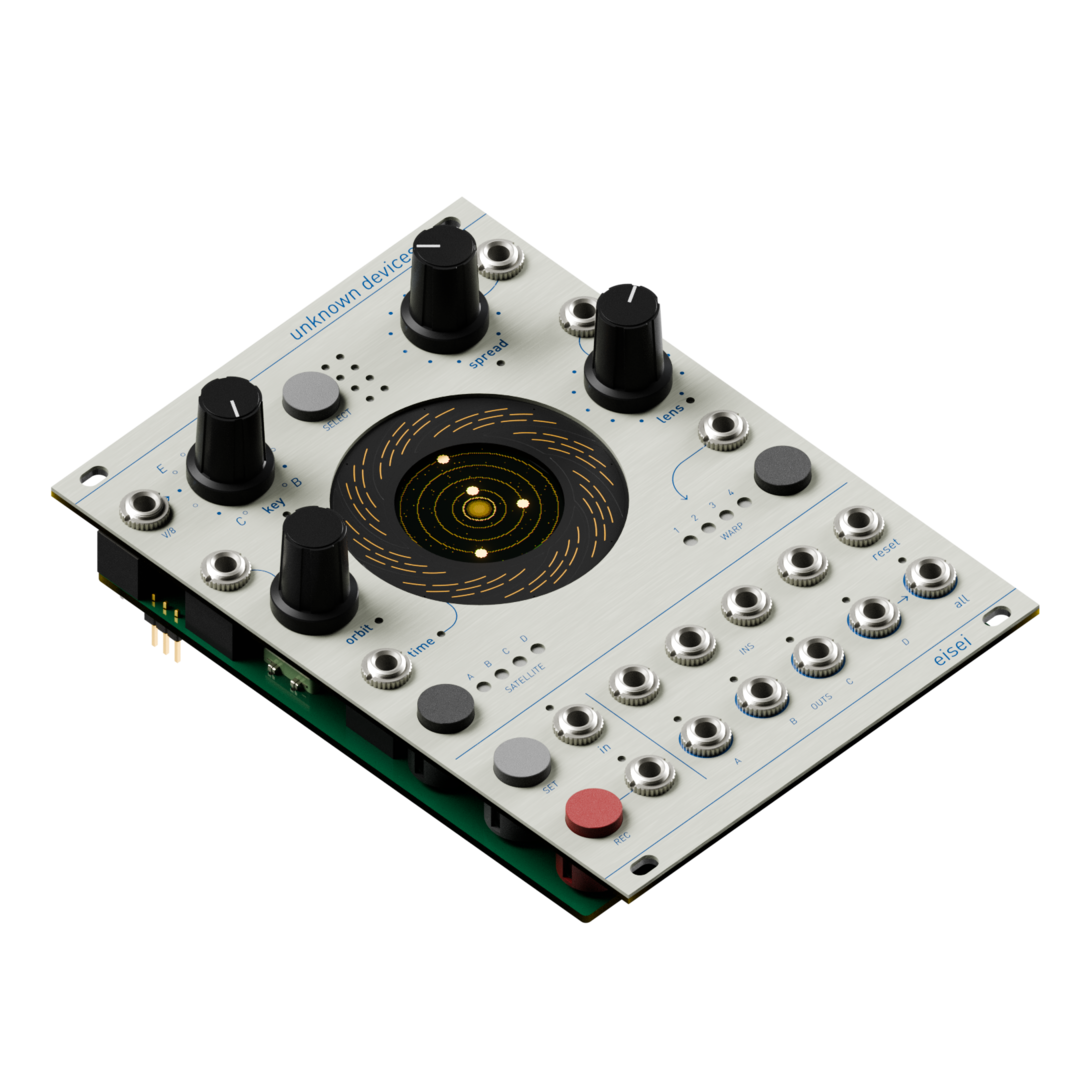Eisei
Quad satellite system
Quad satellite system
Eisei is our take on spectral processing and polyphonic voicing for eurorack format. It is packed with really unique features, focused on complex timbre shaping and entangled harmonic rhythms, knit upon a smart and playful UI.
Eisei can filter, process, harmonize, shape and resynthesize anything coming across. Its core are 4 satellites, each equipped with a 20 bands filterbank, a pulse wave oscillator and dedicated IN & OUT. Eisei offers global controls to move and animate these 4 filterbanks all while scanning thru a spectral data table we named Datum.
Ordering status
Eisei is expected to begin shipping Fall 2025. Prototypes are meeting expectations and sounding excellent, we’re refining the tonal balance and will incorporate minor hardware updates into the production units. We’ll keep you up to date with regular mails and on our social accounts.
These early orders are vital as they help us determine the size of the first batch, fund the hardware’s final iteration, and support production preparation. thanks for the support.
Update:
Preorders for the first batch are now over and sold out, thanks again.
Hello
worlds
Eisei is all about discovering and re-exploring sound scenarios, thanks to its ability to capture audio and convert it into modulation, it unleashes a different approach to navigate sounds and reimagining them, merging and layering different harmonic relations and spectral dynamics to grow new life in your sonic worlds.
It combines the expressivity of spectral processors and harmonic oscillators in a creative interface reminiscent of looping tapes.
Datum
The Datum is a stored “spectral sample” used to animate and excite the filterbanks. It is NOT an audio sample but rather a stored automation based on the audio acquired while pressing REC. Similar to the conversion that takes place in a vocoder or a spectral processor: audio goes through an “analysis” filterbank with an Envelope Follower for each band, then each EF animates the corresponding band in the “processing” filterbank. Eisei stores the EF movements for further exploration. Eisei can store up to 8 Datum that can then be recalled in any moment.
Orbit & Time
Each satellite runs on its own orbit at its own pace. In each position of the orbit the satellites read the Datum. So to do an analogy, look at the satellites as playheads and Datum as a vinyl record. We can run through the orbit with 4 playheads at different speed (and direction) and highlight a slice of interest to loop in. The Orbit encoder allows to change the speed and direction of each satellite individually or all 4 together. Touching the Time wheel allows to position the satellite in the desired spot or manually navigate the orbit.
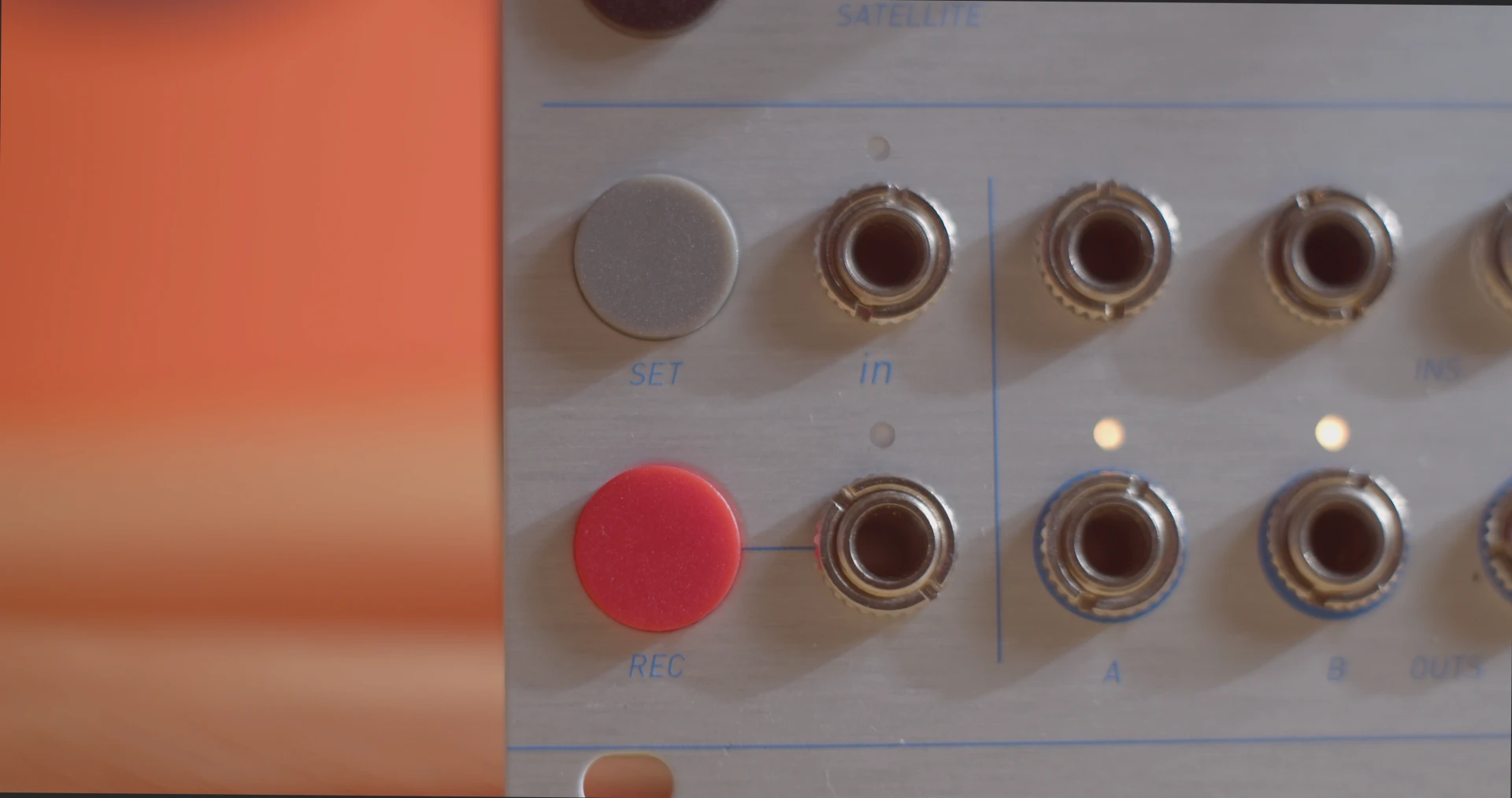
Key
This classic 1v/oct cv input offsets the frequency of the satellites, affecting both the filterbanks and the internal oscillators. Depending on the case can be used to play melodies or result in a multi comb filter sweep.
Spread

Satellites are deeply entangled one to each other and move like a hive mind thanks to the Spread parameter. Fully CCW they will be unison, focusing on the same spectrum segment, fully clockwise leads to harmonic series ratio, anything in between will unfold happy accidents.
Spread will also influence the internal oscillators that will follow the peak of the filterbank.
Lens
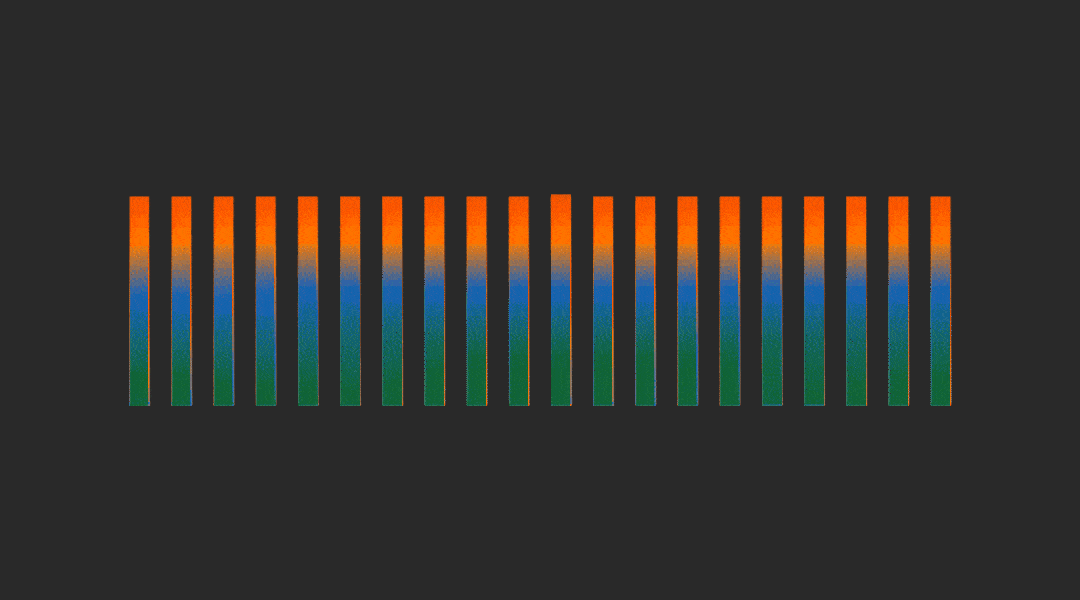
Each satellite is equipped with a powerful Lens engine to precisely control the filter bands. From a single resonant flutey band at noon to a wide array of harmonics in a CW twist. CCW brings to the uncharted territories of a distorted perspective: along with the dominant center band, the bands at the high and low extremes arise and approach to the center at a stepped pace, as they move toward the center the extremes are reintroduced again and again resulting in different resonant configuration until all bands are enabled again when fully CCW.
Warp
This section provides four methods to further manipulate the signal.
- SHIFT – shifted clone of the spectrum configuration
- TANH – from gentle distortion to brick clipping
- SHAPE – internal oscillators pulse width
- FEED – feedback injection
Processing
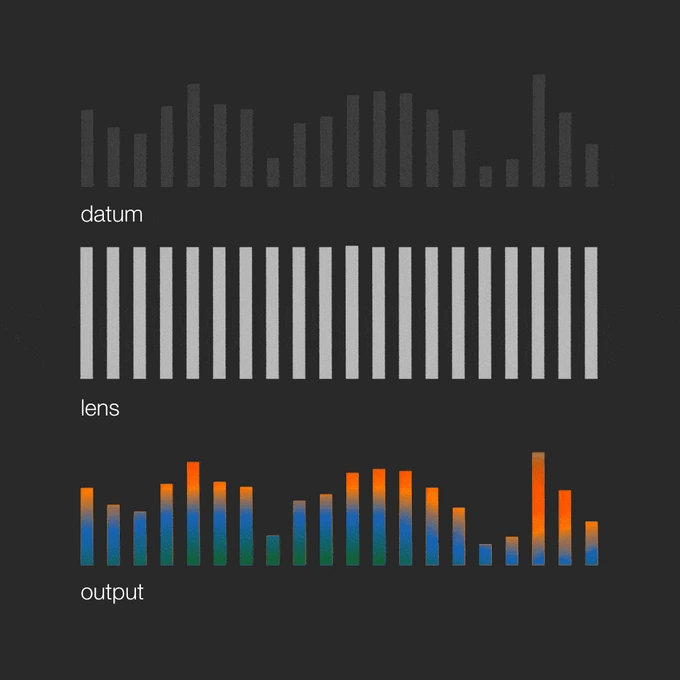
The signal sent into any satellite input passes through a filterbank whose bands are shaped by both Datum and Lens. If no signal is sent to the inputs the internal pulse oscillators are engaged.
Yes, inputs can be pinged.
Dive Deeper
Panel overview
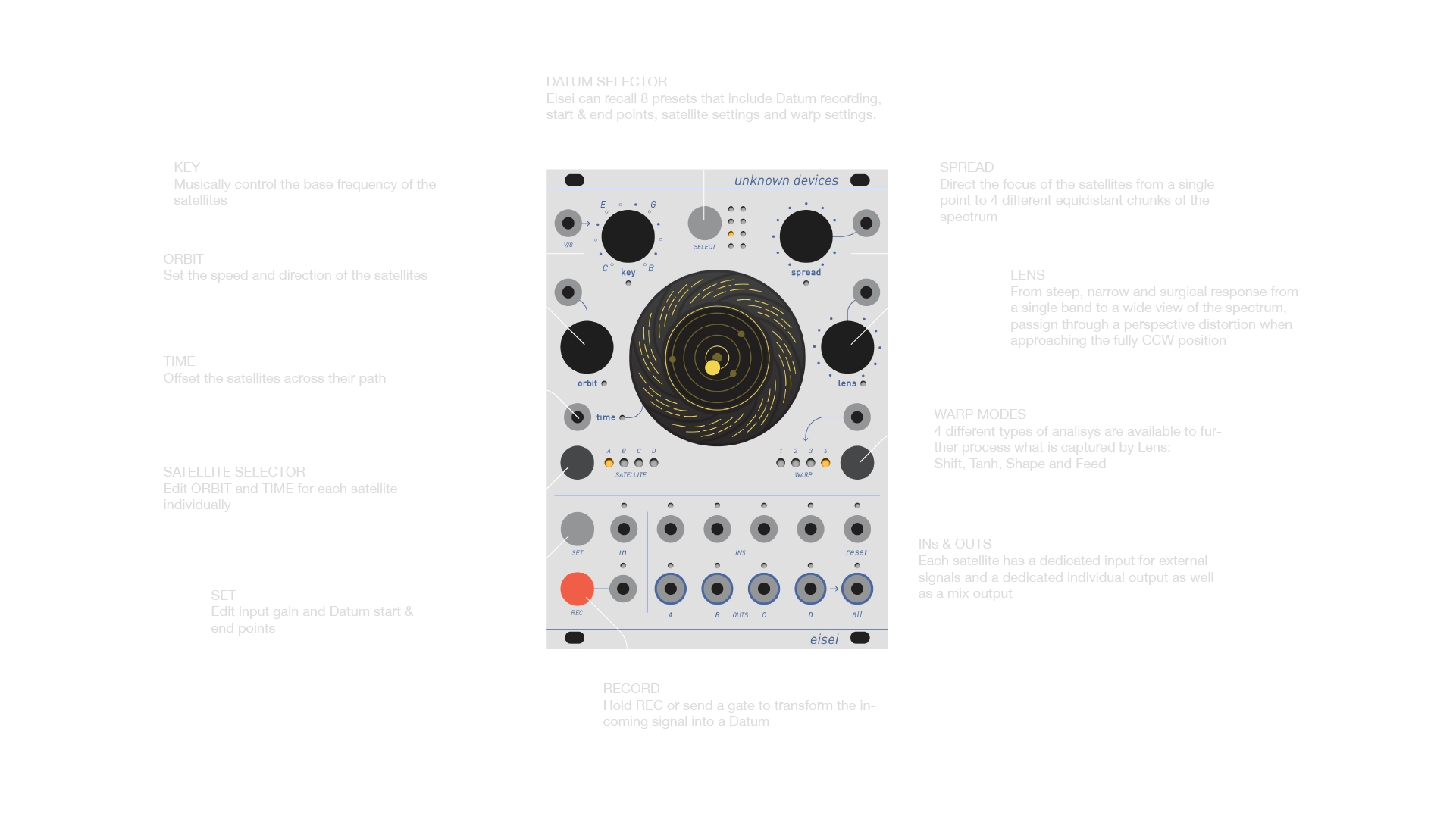
Specs
Dimensions
height – 3U
width – 18HP
depth – 18mm
power consumption N/A on +/-12V rails
Connectivity
6x CV inputs
3x trig/gate inputs
3x audio inputs
1x REC input
4x audio outputs
1x audio sum out
i2c port
Features
Unique UI
Datum sampling™
8x spectral presets (datum)
4x 20 bands filterbanks
4x internal oscs
4x Warp modifiers
based on esp32 + daisy 2
127x127px monochrome OLED display
48khz 16bit audio

